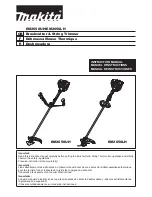
214603
196
Revision A
4.4.2
Using Header Float
The header float feature allows the header to closely follow ground contours and to respond quickly to sudden
changes or obstacles. The float setting is ideal when the cutterbar is on the ground with minimal bouncing, or
scooping, or pushing soil.
IMPORTANT:
•
Set header float as light as possible
—
without excessive bouncing
—
to avoid frequent breakage of knife
components, scooping soil, or soil build-up at the cutterbar in wet conditions.
•
Avoid excessive bouncing (resulting In a ragged cut) by operating at a slower ground speed when the float
setting is light.
•
Install header options (upper cross auger, skid shoes, transport kit, etc.) before setting header float. If the Slow
Speed Transport (SST) tow bar will be stored on the header during operation, set float with tow bar in place.
•
Adjust the float when adding or removing optional attachments that affect the weight of the header.
Float Operating Guidelines
When working with the cutterbar on the ground:
•
Set center-link to mid-range position (5.0 on cab display module [CDM]). Refer to
.
•
When operating at the flattest header angle, minimize scooping rocks by adjusting the header skid shoes
downward to raise guards.
•
To minimize pushing soil, adjust header height or adjust header angle.
When working with the cutterbar off the ground (draper header only):
•
Set center-link to mid-range position (5.0 on CDM). Refer to
4.4.5 Adjusting Header Angle, page 205
•
Balance the amount of header weight carried by the float and stabilizer wheels. Refer to your draper header
operator
’
s manual.
•
Use the CDM controls to automatically maintain cutting height. Refer to
4.4.6 Controlling Cutting Height, page
.
Summary of Contents for M205
Page 3: ...Declaration of Conformity 1025029 ...
Page 4: ...1025030 ...
Page 20: ......
Page 440: ......
Page 462: ......
Page 511: ...windshield wipers 56 INDEX ...
Page 512: ......
















































